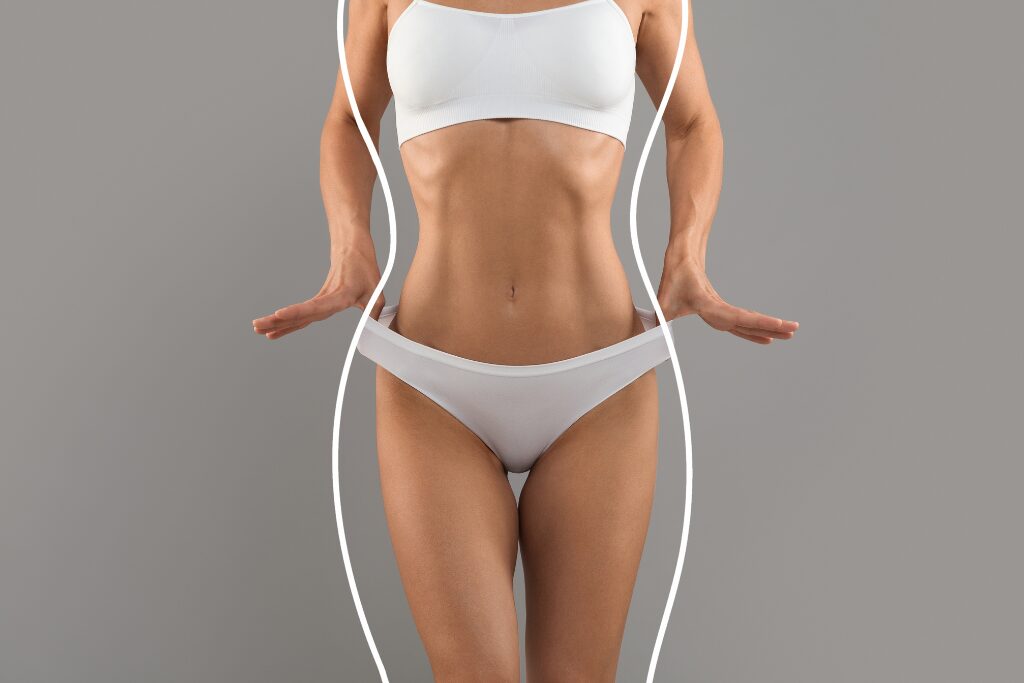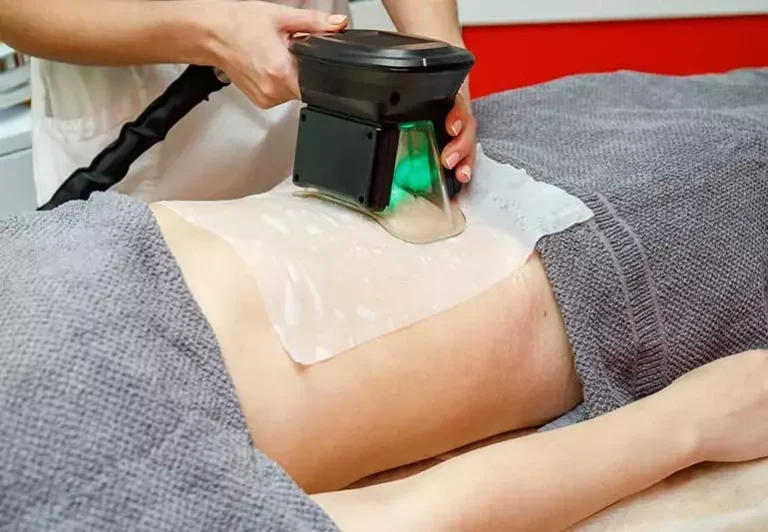Body Sculpting Technology: Innovations Shaping Aesthetic Futures
Body Sculpting Technology: Innovations Shaping Aesthetic Futures
The field of body sculpting is in a constant state of evolution, driven by relentless advancements in medical science and engineering. What was once considered science fiction is now becoming reality, offering safer, more effective, and less invasive ways to achieve desired body contours. At BodySculpting Report, we are committed to keeping you informed about the cutting edge. This comprehensive guide to body sculpting technology innovation explores the latest breakthroughs, emerging trends, and what the future holds for aesthetic transformation.

Quick Navigation
- The Evolution of Body Sculpting Technology
- Non-Invasive Advancements: The Power of Energy Devices
- Surgical Innovations: Enhanced Precision and Recovery
- Regenerative Medicine: Harnessing the Body’s Own Power
- Future Trends: AI, Robotics, and Personalized Aesthetics
- Choosing Body Sculpting Technology Innovations Wisely
The Evolution of Body Sculpting Technology
From the early days of manual liposuction to today’s sophisticated devices, body sculpting technology innovation has transformed how we approach body contouring. The driving force behind these advancements is the quest for:
- Increased Efficacy: Better and more consistent results.
- Reduced Downtime: Faster return to daily activities.
- Enhanced Safety: Minimizing risks and side effects.
- Greater Precision: Targeting specific areas with unparalleled accuracy.
- Improved Patient Comfort: Less pain and more tolerable procedures.
Key Milestones in Body Contouring
- Traditional Liposuction (1970s-1980s): Revolutionized fat removal but often with significant bruising and recovery.
- Tumescent Liposuction (1980s-1990s): Introduced large volumes of diluted local anesthetic, vastly improving safety and recovery.
- Non-Invasive Technologies (2000s-Present): Emergence of devices like CoolSculpting and Emsculpt, offering options without incisions.
- Energy-Based Surgical Assistance (2000s-Present): VASER, Laser-Lipo, and RFAL (Radiofrequency-Assisted Liposuction) enhancing surgical outcomes.
Non-Invasive Advancements: The Power of Energy Devices
The non-invasive sector is where much of the exciting body sculpting technology innovation is taking place, offering alternatives to surgery for fat reduction, muscle toning, and skin tightening.
Fat Reduction Technologies
- Cryolipolysis (e.g., CoolSculpting Elite): Freezes fat cells to temperatures that cause them to crystallize and die, which are then naturally eliminated by the body. The «Elite» version allows for dual applicators, treating larger areas or two areas simultaneously.
- Controlled Heat (e.g., truSculpt iD, SculpSure): Uses radiofrequency (RF) or laser energy to heat fat cells, destroying them. These technologies are often lauded for their quick treatment times and comfortable experience.
- Ultrasound (e.g., UltraShape, Liposonix): High-intensity focused ultrasound (HIFU) precisely targets and disrupts fat cells without harming surrounding tissue.
Muscle Toning and Building
- High-Intensity Focused Electromagnetic Energy (HIFEM) (e.g., Emsculpt, Emsculpt NEO): Induces powerful muscle contractions far beyond what’s achievable through voluntary exercise. Emsculpt NEO combines HIFEM with radiofrequency for simultaneous fat reduction and muscle building, offering a «two-in-one» treatment.
Skin Tightening Technologies
- Radiofrequency (e.g., Thermage FLX, Morpheus8): Heats deeper skin layers to stimulate collagen and elastin production, leading to skin tightening. Morpheus8 adds microneedling to deliver RF energy deeper, improving skin texture and tone.
- Ultrasound (e.g., Ultherapy): Uses focused ultrasound energy to lift and tighten loose skin on the face, neck, and chest by targeting deep foundational layers.
Surgical Innovations: Enhanced Precision and Recovery
Surgical body sculpting has also seen significant body sculpting technology innovation, leading to safer procedures, more precise results, and often quicker recovery times.
Advanced Liposuction Techniques
- VASER Liposuction: Utilizes ultrasound energy to emulsify fat cells before removal, allowing for more precise sculpting, especially in fibrous areas, and often better skin retraction.
- Laser-Assisted Liposuction (SmartLipo): Employs laser energy to liquefy fat and stimulate collagen, potentially leading to improved skin tightening compared to traditional liposuction.
- Radiofrequency-Assisted Liposuction (RFAL) (e.g., BodyTite): Combines liposuction with RF energy delivered both internally and externally to melt fat and significantly tighten skin, particularly beneficial for areas with moderate skin laxity.
Minimally Invasive Surgical Tools
- Endoscopic Techniques: Used in procedures like mini tummy tucks or brow lifts, allowing for smaller incisions and reduced scarring by performing surgery with the aid of a small camera.
- Advanced Suturing Materials and Techniques: Innovations in absorbable sutures and barbed sutures reduce the need for external stitches and improve tissue approximation.
Regenerative Medicine: Harnessing the Body’s Own Power
One of the most promising areas of body sculpting technology innovation is regenerative medicine, which focuses on using the body’s natural healing and growth factors.
Fat Grafting and Transfer
- Enhanced Fat Survival: Improvements in fat harvesting, processing, and reinjection techniques have significantly increased the survival rate of transferred fat cells, leading to more predictable and long-lasting results in procedures like Brazilian Butt Lifts (BBL) or breast augmentation with fat.
- Enrichment with PRP/PRF: Some practitioners are exploring the use of Platelet-Rich Plasma (PRP) or Platelet-Rich Fibrin (PRF) to enrich transferred fat, potentially improving fat cell survival and overall tissue quality.
Beyond Fat: Stem Cells and Biologics
- While still largely in research phases for aesthetic applications, the potential use of stem cells and other biologics to improve skin quality, wound healing, and even tissue regeneration represents a cutting-edge frontier in future body sculpting treatments.
Future Trends: AI, Robotics, and Personalized Aesthetics
The pace of body sculpting technology innovation is accelerating, with several exciting trends poised to shape the future of the industry.
Artificial Intelligence (AI) and Machine Learning
- Predictive Analytics: AI can analyze vast amounts of patient data to predict optimal treatment outcomes, personalize treatment plans, and even simulate results for patients.
- Enhanced Diagnostics: AI algorithms can assist in more accurate assessments of fat, muscle, and skin quality, guiding treatment selection.
Robotics and Automation
- Precision Surgery: Robotic systems offer unparalleled precision and stability, potentially leading to even safer and more consistent surgical results.
- Automated Non-Invasive Devices: Future devices might incorporate robotics for more consistent application of energy, reducing operator variability.
Personalized and Predictive Aesthetics
- 3D Imaging and Simulation: Advanced 3D imaging allows for highly detailed pre-procedure planning and realistic simulations of post-procedure results, improving patient satisfaction.
- Genomic and Microbiome Data: While nascent, integrating genetic and microbiome data could lead to highly personalized recommendations for body sculpting treatments, recovery protocols, and long-term maintenance.
«The future of body sculpting isn’t just about new machines; it’s about integrating technology to create a safer, more precise, and highly personalized experience for every patient.» — Dr. Elena Petrova, Leading Researcher in Aesthetic Tech. Explore more about aesthetic surgery trends from the Aesthetic Society.
Choosing Body Sculpting Technology Innovations Wisely
With rapid body sculpting technology innovation, it’s more important than ever to make informed decisions. While new technologies are exciting, not all are equally effective or suitable for every individual.
Key Considerations
- Provider Experience: Ensure your chosen practitioner is highly experienced and well-trained in the specific technology.
- Clinical Evidence: Look for treatments backed by peer-reviewed studies and FDA (or equivalent regulatory body) clearance.
- Realistic Expectations: Understand the potential results, limitations, and recovery associated with any innovative treatment.
- Personalized Consultation: A thorough consultation will determine if a new technology is the right fit for your specific goals and body type.
Conclusion: The Future is Sculpted
The continuous wave of body sculpting technology innovation promises an exciting future for aesthetic medicine. From refining existing techniques to pioneering entirely new approaches, these advancements are making body contouring more accessible, effective, and tailored to individual needs.
At BodySculpting Report, we are dedicated to being your trusted source for insights into this dynamic field. Stay curious, stay informed, and embrace the possibilities that these incredible technologies offer for your journey towards a more confident you.
About This Guide
This guide on body sculpting technology innovation was compiled by the editorial team at BodySculpting Report, with insights from leading researchers and practitioners in aesthetic technology. Last updated: July 2025.


